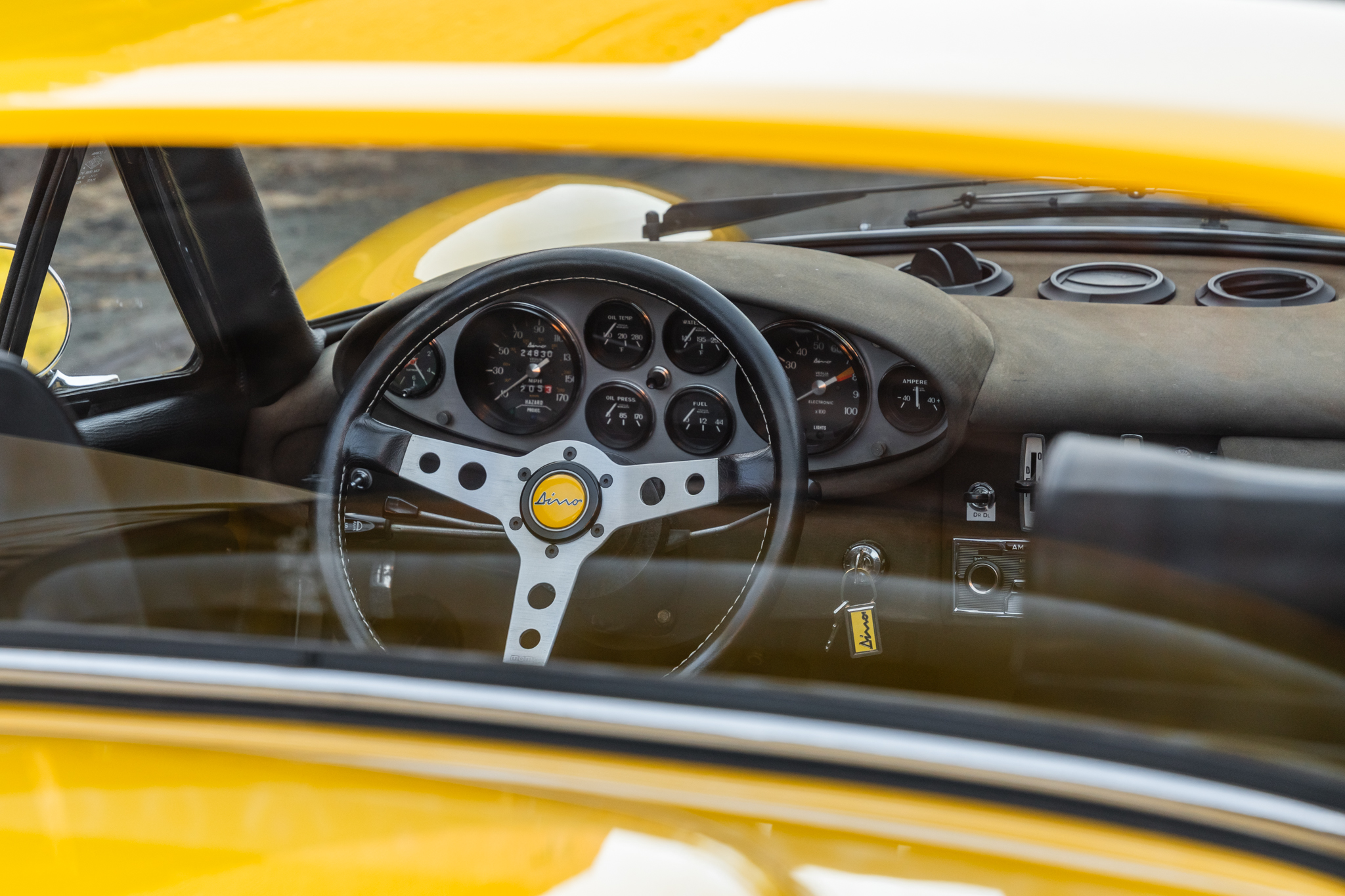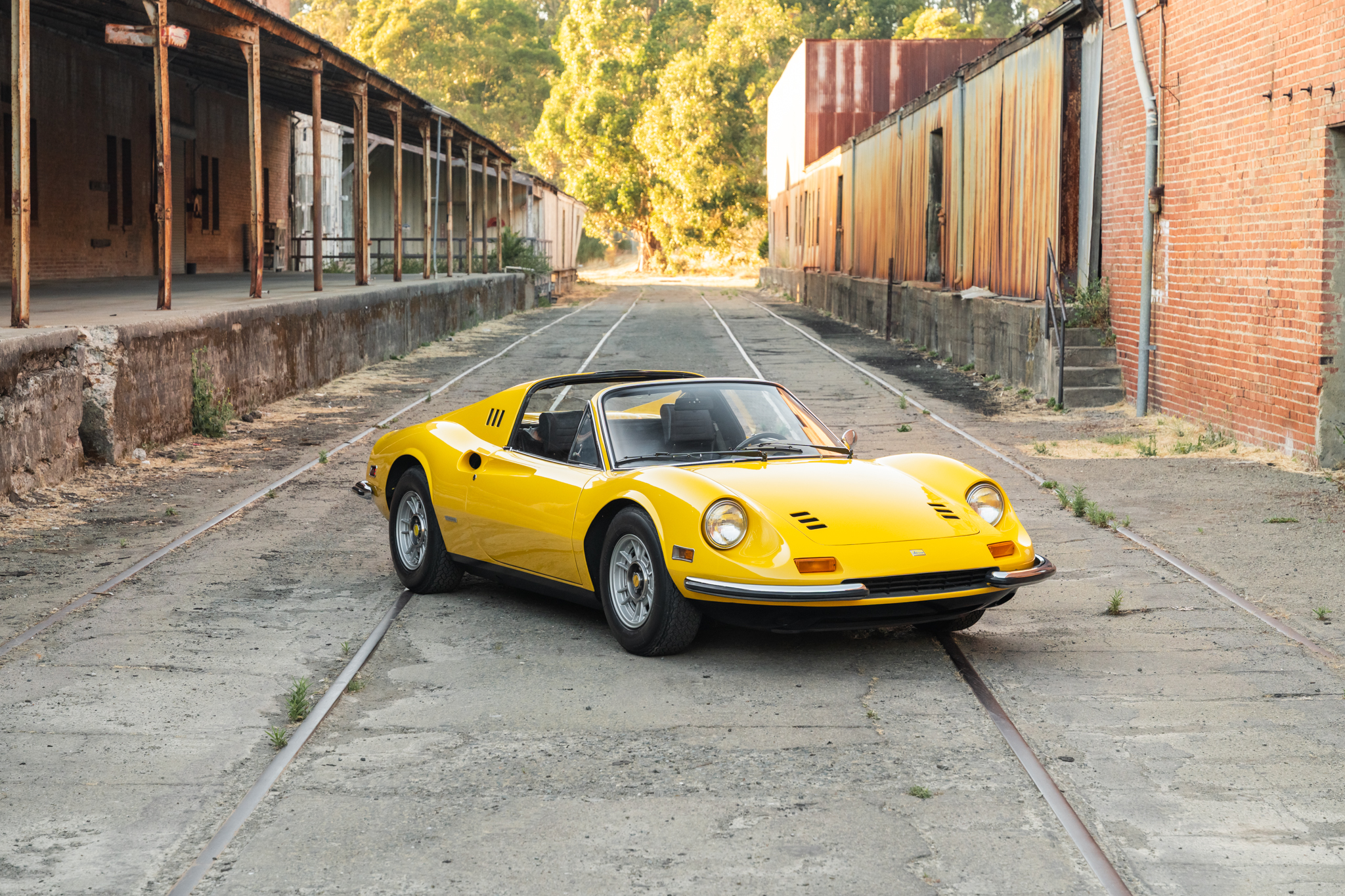
Ferrari’s first mid-engined production car, the Dino was created to facilitate motor racing. In 1965, the Fédération International de l’Automobile (FIA), the governing body for motorsport including Formula 1 and Formula 2, mandated that 1967 Formula 2 cars be powered by production-based engines of at most 6 cylinders and 1.5 liters. Ferrari had successfully raced V6s since the late 1950s, but none had powered any road cars, and thus the “production-based” regulation was challenging since it required at least 500 road cars be produced within 12 months.
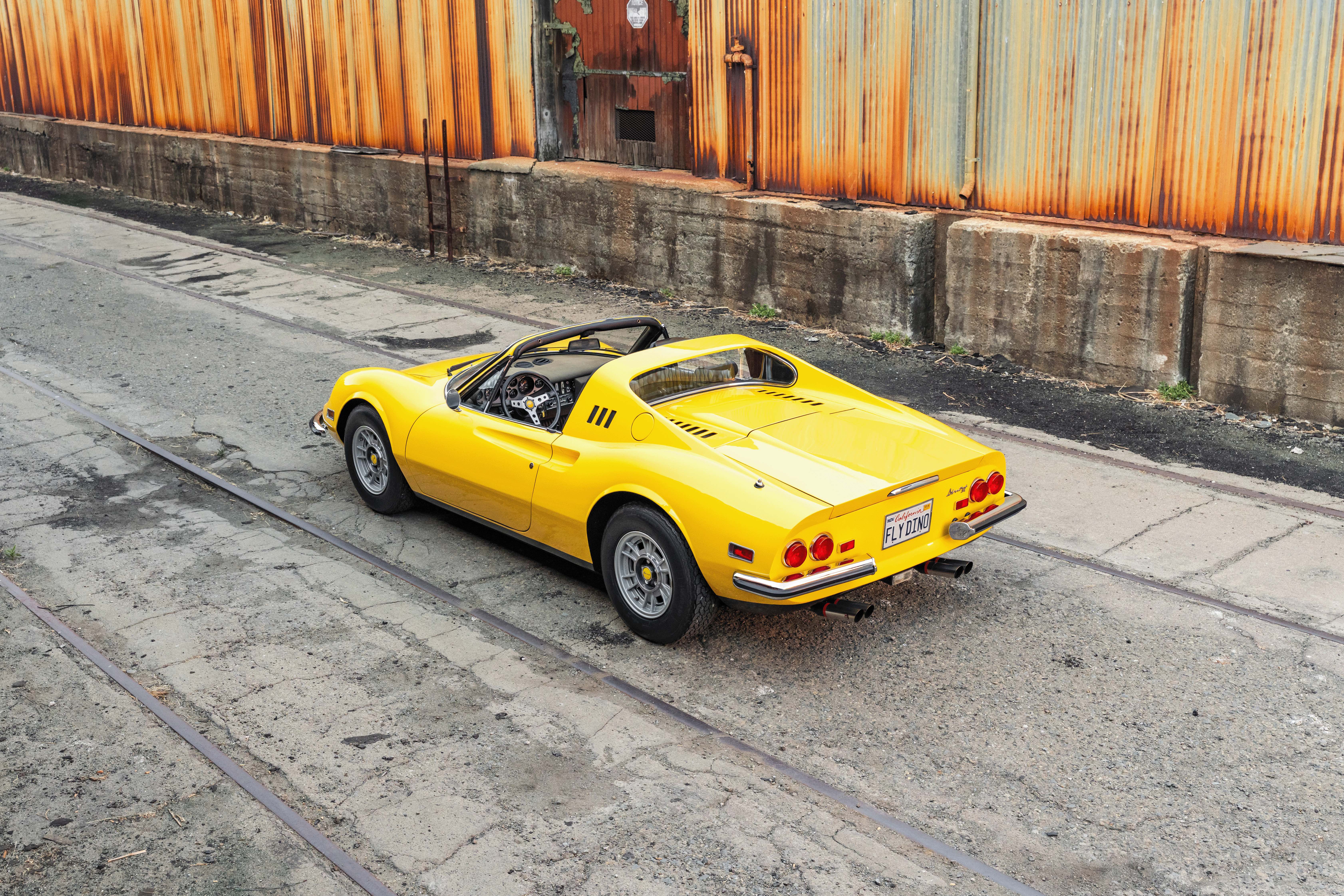
Ferrari’s 1966 road car production, all of it V12-powered, totaled 665 cars, so nearly doubling production in a year simply wasn’t possible. Thus, an agreement between Ferrari and Fiat was announced: both Fiat and Ferrari would build new sports cars powered by a Ferrari-designed V6. While the front-engined Fiat Dino topped the marque’s model range, the Ferrari Dino did the opposite, representing a move to a completely new higher-volume segment.
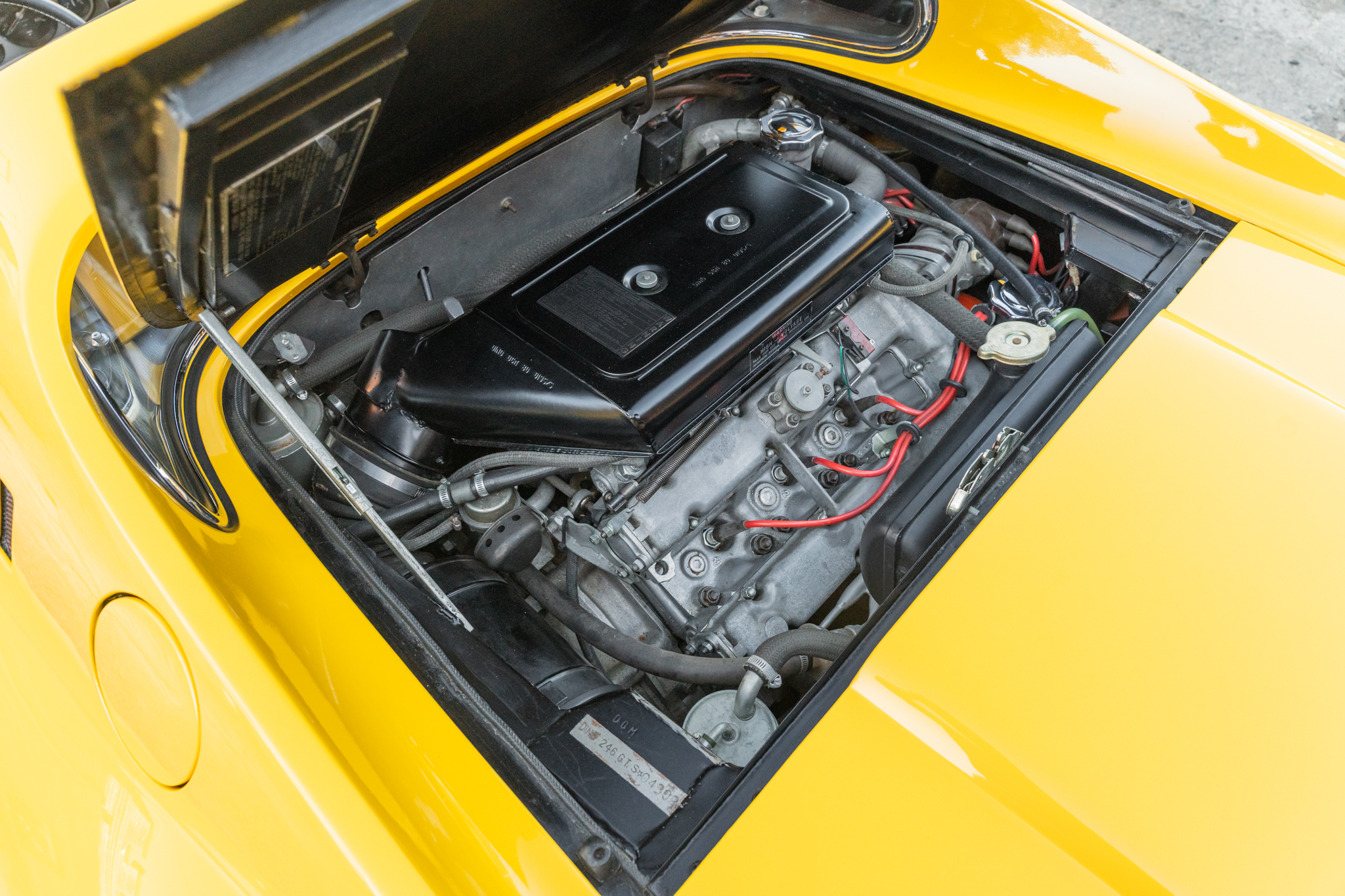
This plan was particularly helpful for Ferrari. To offset the growing costs of both Sports Car and Formula 1 racing in the 1960s, Ferrari needed to markedly increase road car production. Priced around $14,000 by 1972, the Dino cost appreciably more than a Porsche 911, which topped out around $11,000, but much less than the $20,000 365 GTB/4 Daytona. The Dino’s lower price would sell more cars and generate more revenue of course, but its specifications drew attention at any price.
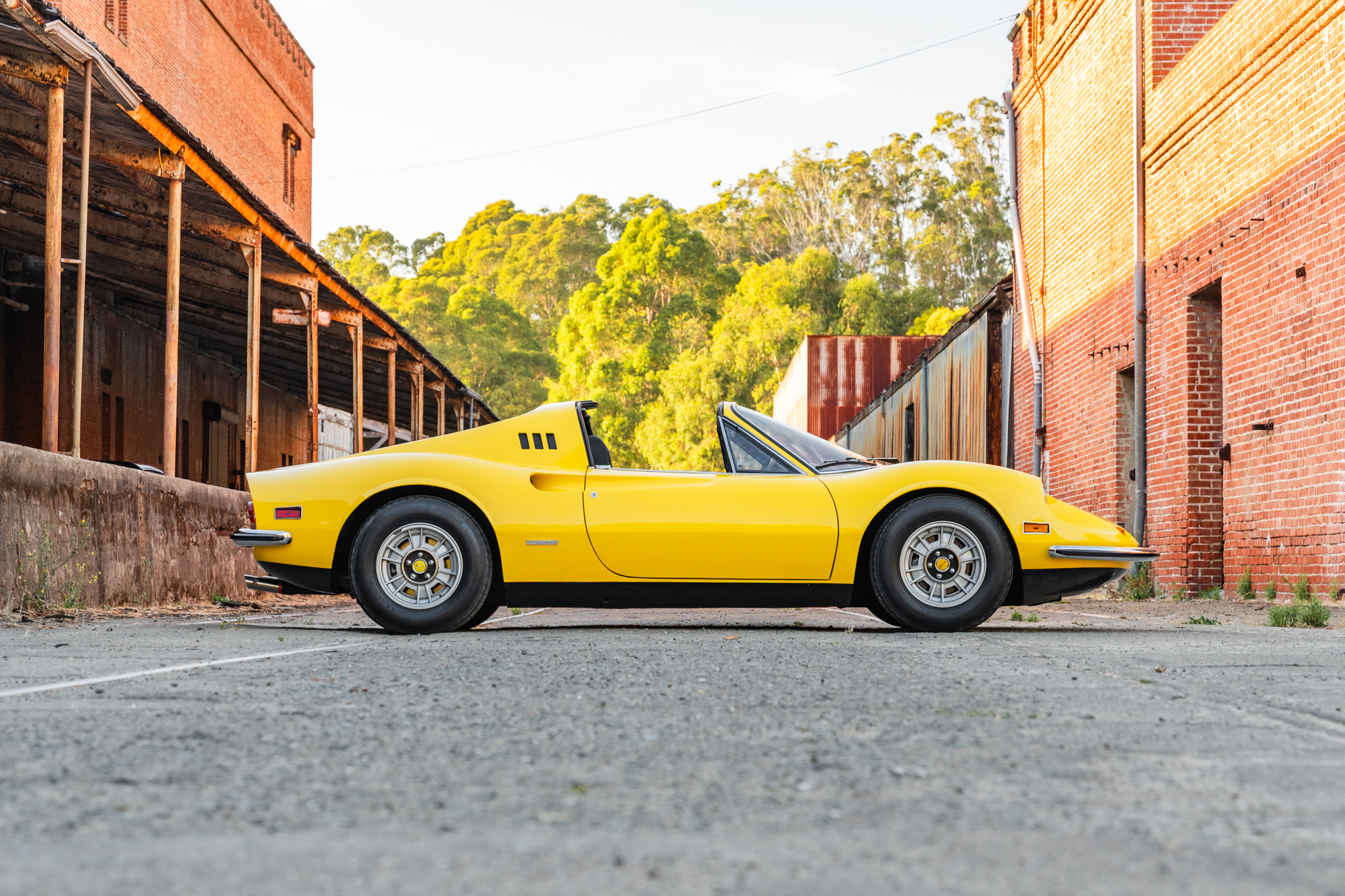
One of its most exciting characteristics was the placement of the engine amidships. The 206 Dino debuted at the 1967 Turin Motor Show, just 18 months after the Lamborghini Miura set the motoring world alight with its mid-engined layout. This was proper race car technology at the time and the remainder of the Dino’s specification was no less sophisticated: independent double wishbone suspension and ventilated disc brakes all around, rack and pinion steering, 5-speed transaxle, and of course the engine. The 65-degree V6 used dual overhead camshafts, and in initial 2.0 liter form, aluminum construction throughout. It made 90 horsepower per liter, an impressive specific output for any carbureted roadgoing engine with two valves per cylinder. These technical features, coupled with the stunning Pininfarina aluminum bodywork made the car a sensation.
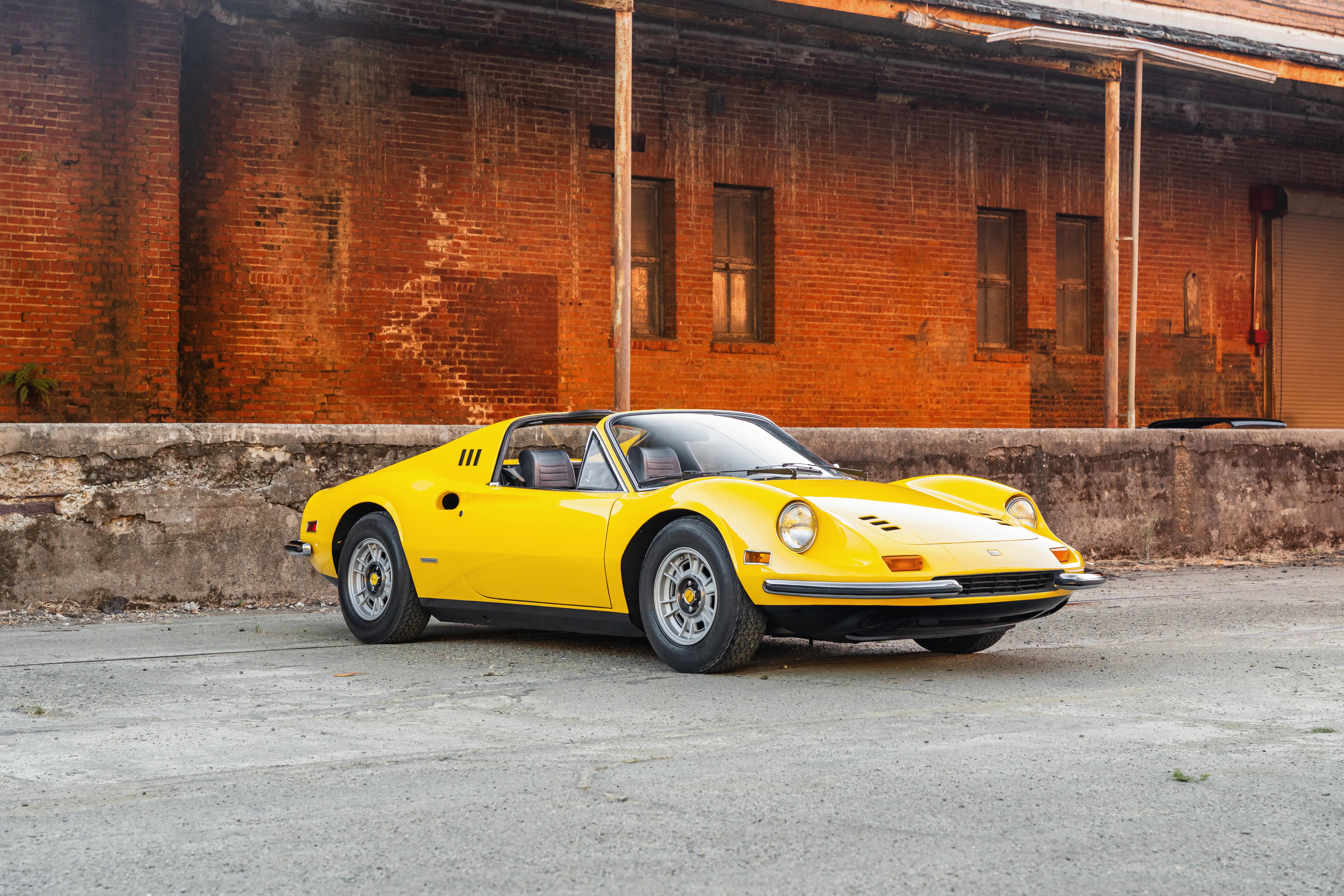
The Dino’s aluminum intensive construction, both in its engine and bodywork, made production expensive, so more conventional materials were substituted in 1969. The car’s name changed to 246 to reflect a displacement bump to 2.4 liters, which yielded a welcome 21% torque increase, which arrived 1,000 RPM sooner at 5,500 RPM. Power peaked 400 RPM sooner, resulting in a more flexible car that was better suited to the important US market, where the car debuted for 1972.
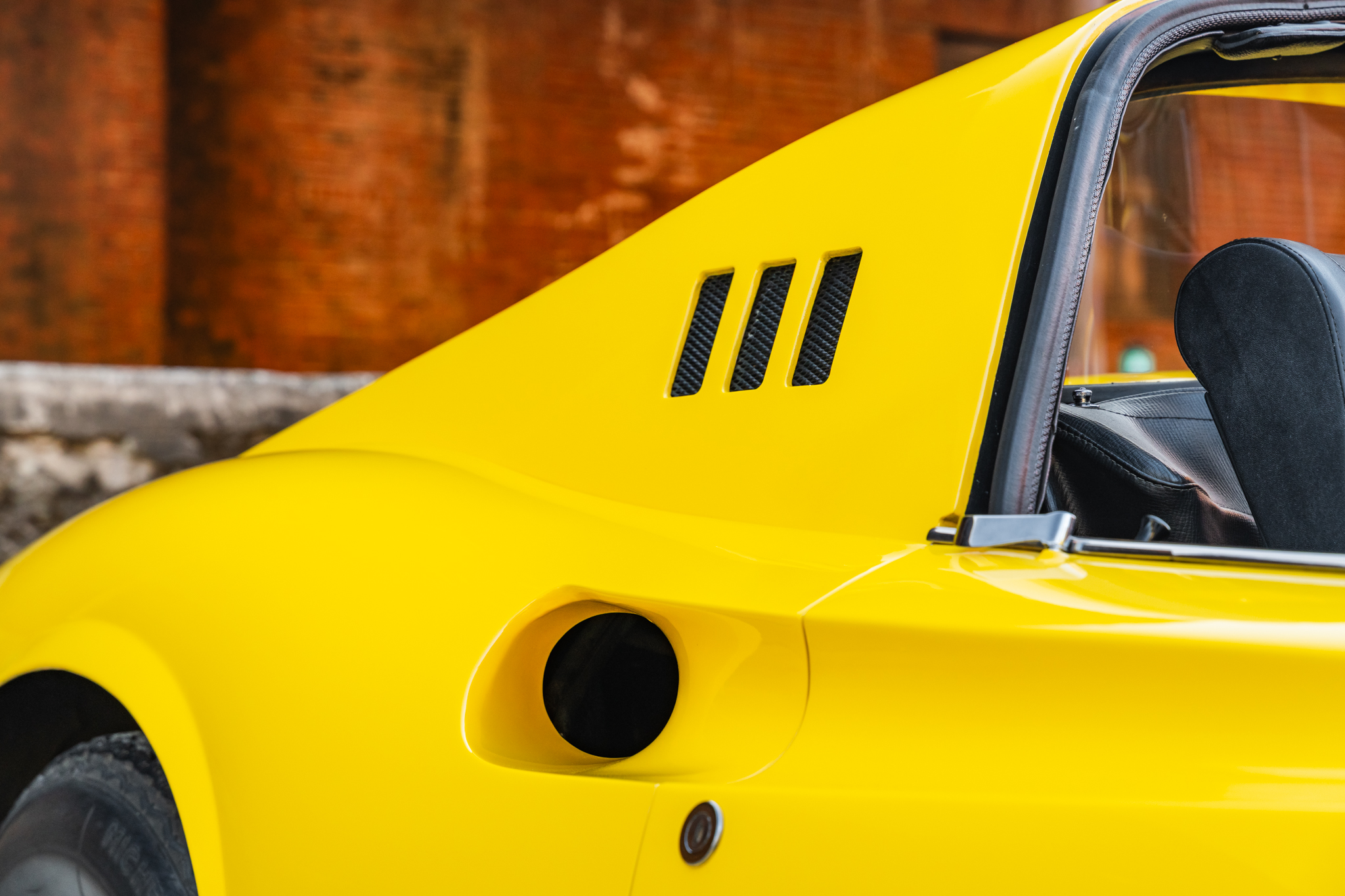
This particular Dino is a Classiche-certified US-market 2.4 liter example with excellent integrity. Both the car itself and the included accessories are exceptionally correct and complete. It was sold new on the 13th of March 1973 to an owner in Menaska, Wisconsin per the included warranty booklet, and was owned by another Wisconsin resident from the 15th of February 1976 until 1985, at which time it passed to a Georgia owner, then showing 19,128 miles. He kept the car until the 12th of February 1990, when a Florida owner acquired the car. It remained in Florida until the current owner acquired it in 2006, at which time the indicated mileage was 22,000. He has used the car sparingly and the current mileage of 24,900 is believed to be from new, which is supported by the excellent condition of the largely original interior. The carpets and possibly the seats were renewed, the console, dashboard, and firewall retain their original upholstery, all in excellent condition. Also present are telltales such as the often-missing upholstered roof cover and the locking tab for the trunk, engine lid, and fuel door.
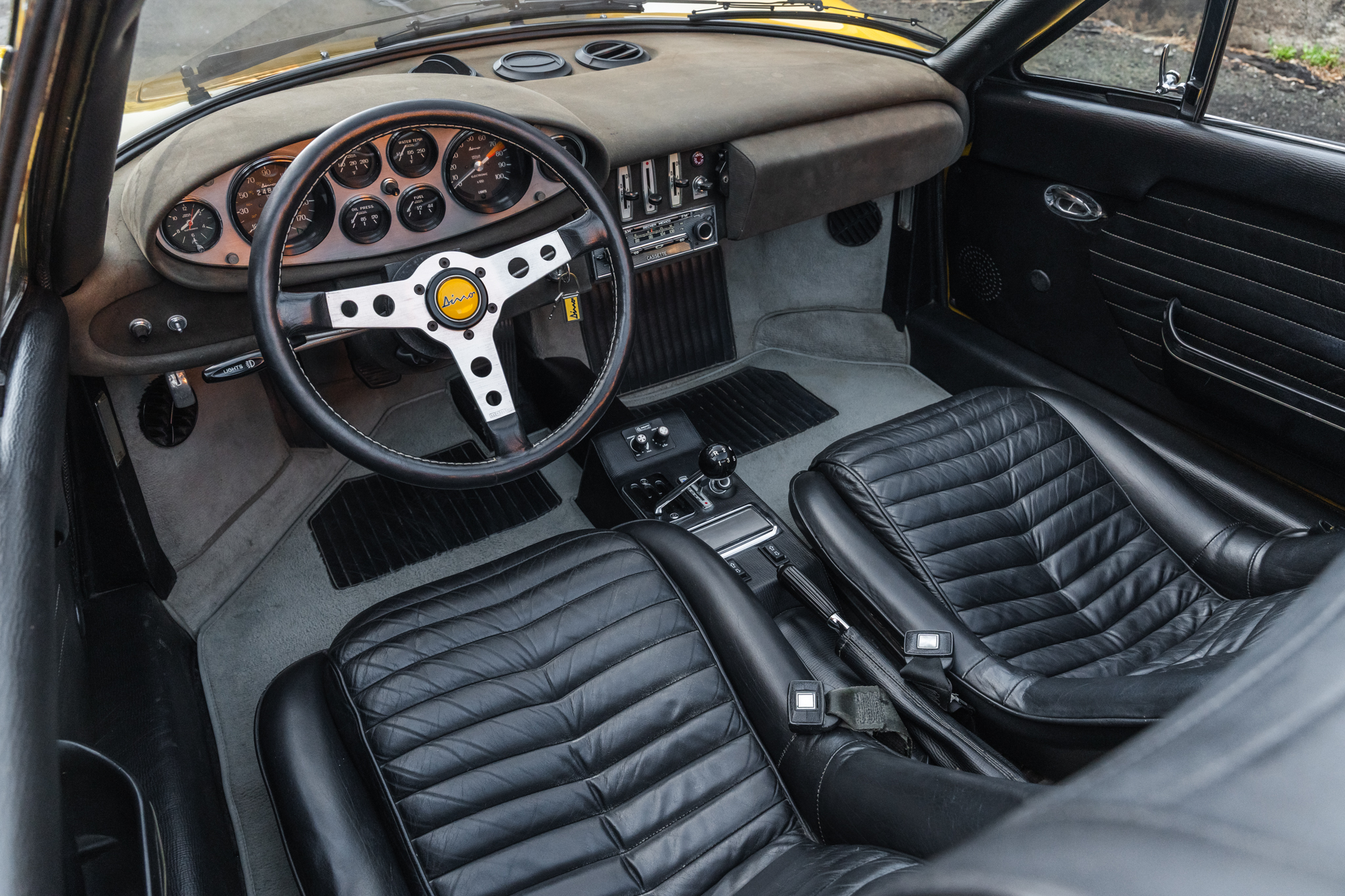
Other noteworthy details include an exceedingly well-preserved and complete books set which includes the owner’s manual, warranty booklet, consumer information booklet, USA market supplement, Hirschman documentation for the antenna, and even a spare set of Neiman keys in their original envelope. In fact, the car comes with 4 ignition keys total, all Neiman. Also included are the tool roll and jack, wheel chock, and emergency window winder, all in similarly impressive original condition.

The car’s current custodian has enthusiastically kept the car as part of his Ferrari collection. He displayed the car at Concorso Italiano in 2007 and 2011, where it won awards both times. In 2014, the car was Classiche certified, confirming that it retains both its original engine and gearbox. The car has received a recent service by Patrick Ottis Company, and also received rebuilt carburetors and a new exhaust system in 2013, also by Patrick Ottis.
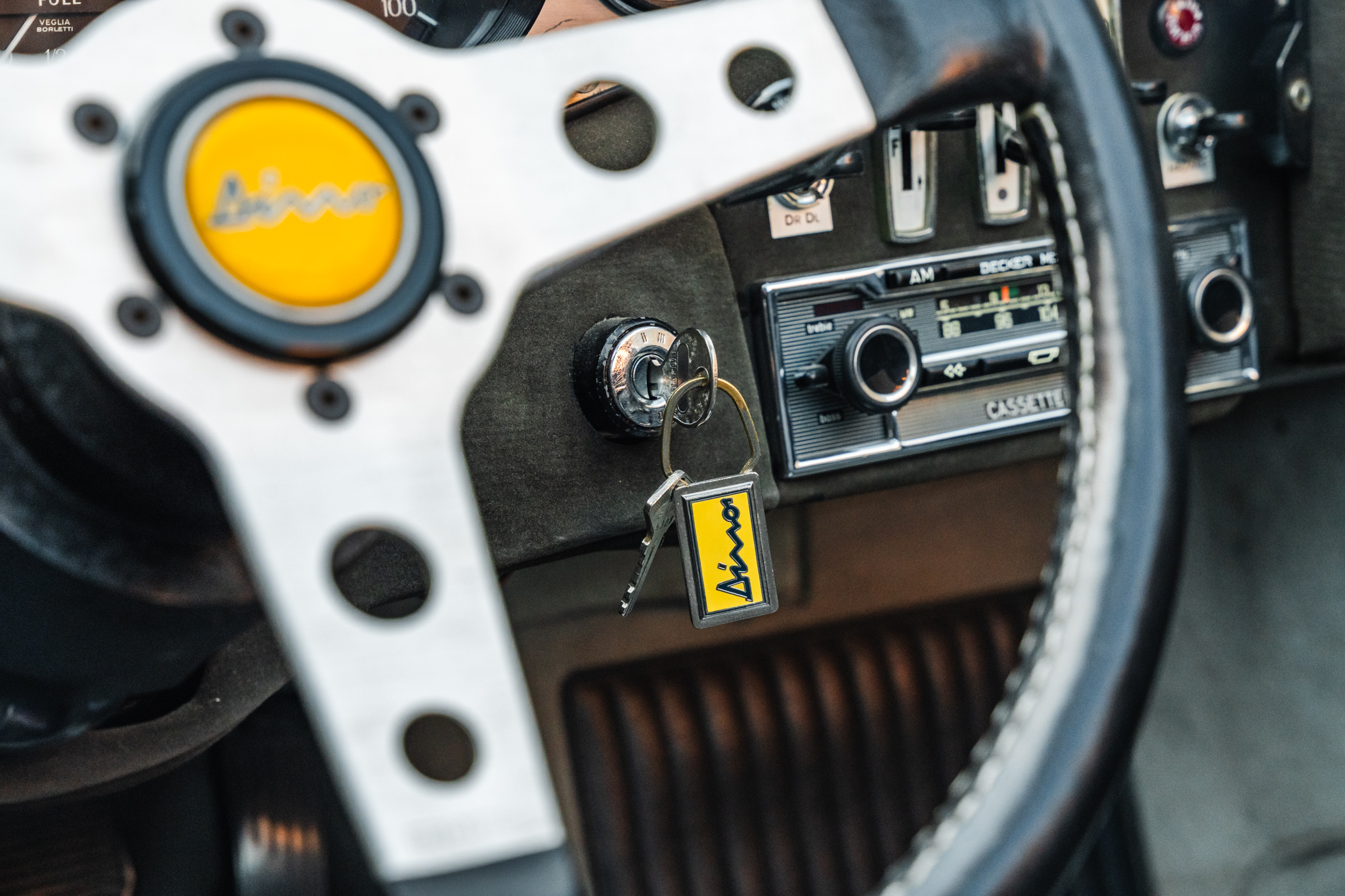
The overall impression created by this car is of a remarkably preserved and largely unrestored Dino which is wonderfully undisturbed and very complete. As Dinos dropped into affordability during the 80s and 90s especially, many were neglected, only to be resuscitated in more recent decades as values have increased. This car bucks that trend. The little details that Dino connoisseurs will recognize show that this car was always cherished, something that distinguishes this car even among the extraordinary company of any Dino.
